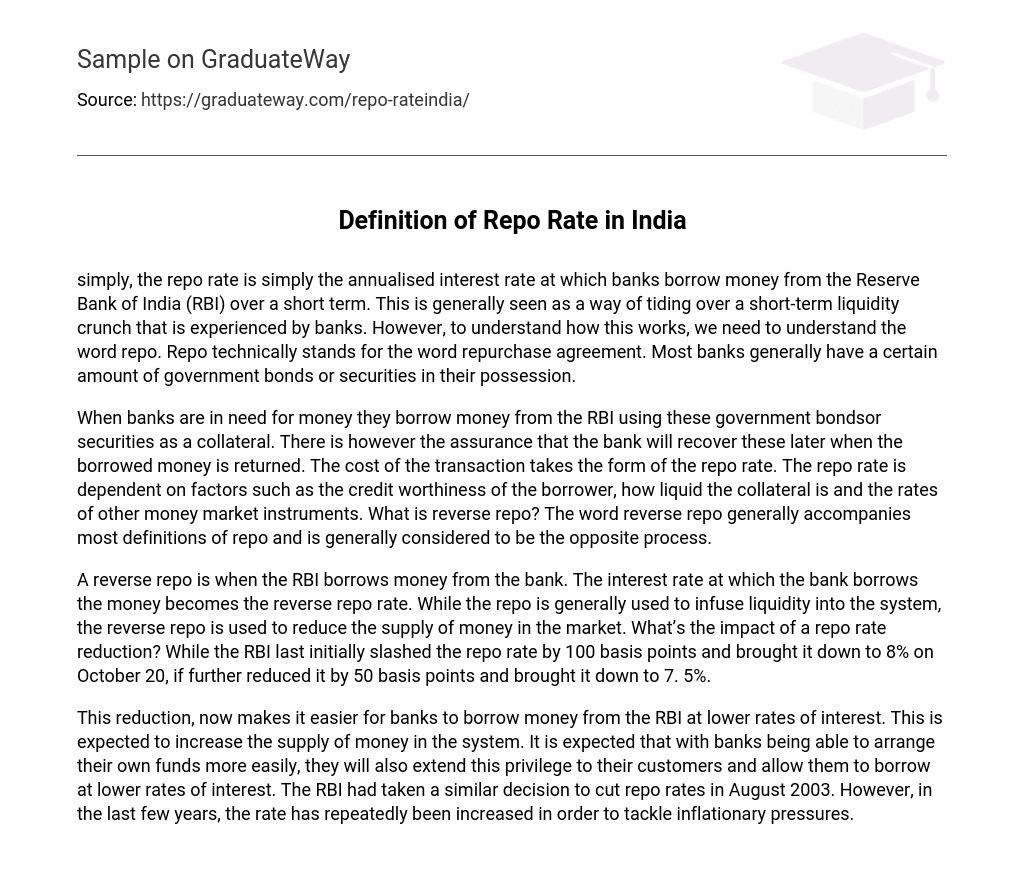The repo rate, also known as the interest rate at which banks borrow funds annually from the Reserve Bank of India (RBI), is used to manage temporary liquidity shortages through repurchase agreements called repos. Normally, banks utilize government bonds or securities as collateral.
The Reserve Bank of India (RBI) permits banks to obtain funds by utilizing government bonds or securities as collateral. This guarantees that the banks can reclaim the collateral once they repay the borrowed sum. The expense of this transaction is determined by the repo rate, which considers factors including creditworthiness, liquidity of collateral, and rates of other money market instruments. Reverse repo is regarded as the inverse process and is frequently mentioned alongside repo.
A reverse repo is when the RBI borrows money from a bank, with the interest rate at which the bank borrows becoming the reverse repo rate. This is done to decrease the amount of money in circulation, unlike a repo which injects liquidity into the market.
The reduction in the repo rate has had a significant impact. Initially, on October 20, the RBI decreased the repo rate by 100 basis points to 8%. Furthermore, it subsequently reduced it by an additional 50 basis points to bring it down to 7.5%.
The RBI’s decision to lower repo rates enables banks to access funds at reduced interest rates, thereby boosting the overall money supply. This move encourages banks to provide loans with decreased interest rates to their customers. It is important to mention that the RBI had previously implemented a similar measure in August 2003; however, due to inflationary pressures, they have recently raised these rates multiple times.





